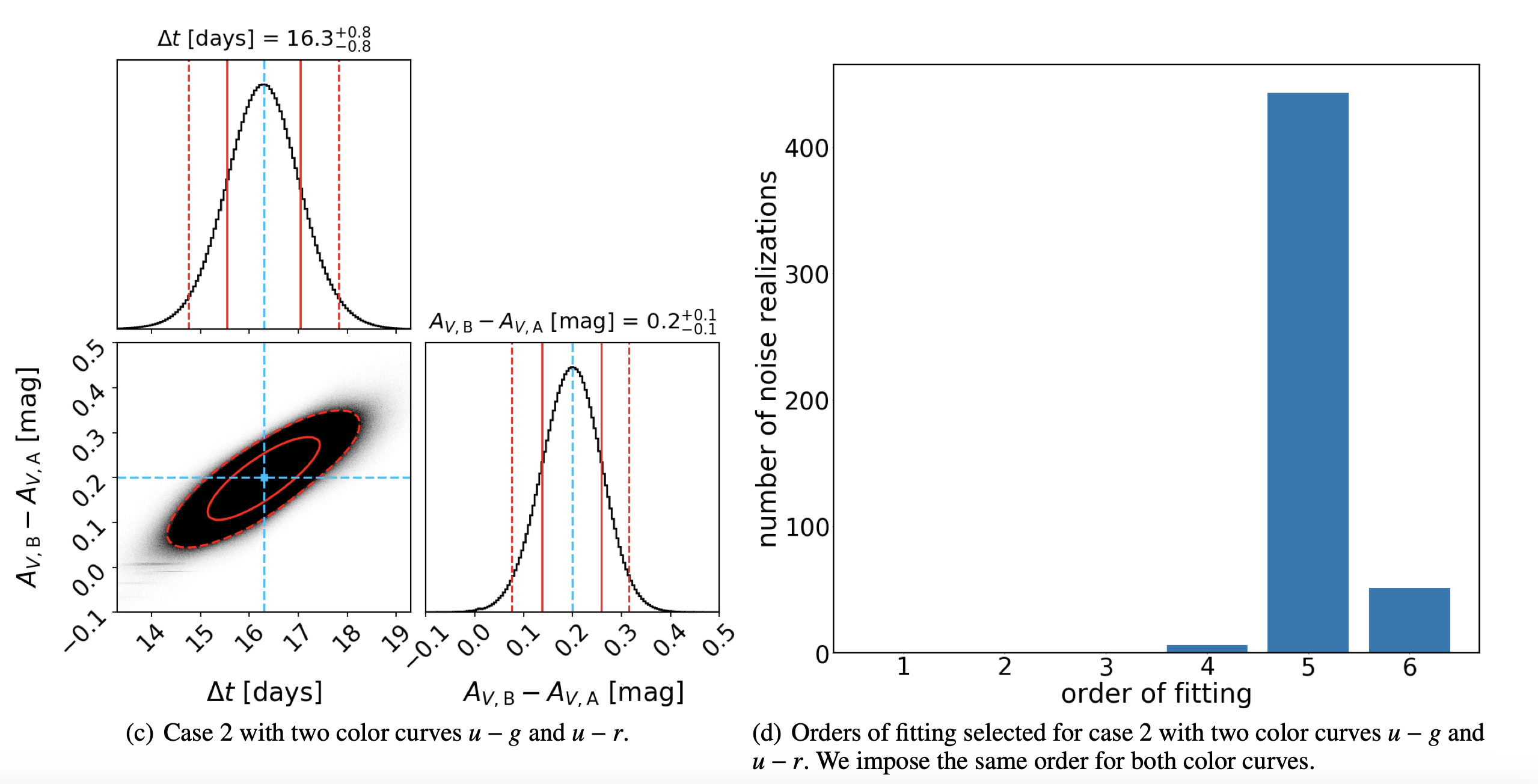HOLISMOKES - XIV. Time-delay and differential dust extinction determination with lensed type II supernova color curves
The Hubble tension is one of the most relevant unsolved problems in cosmology today. Strongly gravitationally lensed transient objects, such as strongly lensed supernovae, are an independent and competitive probe that can be used to determine the Hubble constant. In this context, the time delay between different images of lensed supernovae is a key ingredient. We present a method, to retrieve time delays and the amount of differential dust extinction between multiple images of lensed type IIP supernovae through their color curves, which display a kink in the time evolution. With multiple realistic mock color curves based on an observed unlensed supernova from the Carnegie Supernova Project, we demonstrate that we can retrieve the time delay with uncertainties of ±1.0 days for light curves with 2-day cadence and 35% missing data due to weather losses. The differential dust extinction is more susceptible to uncertainties, because it depends on imposing the correct extinction law. Further we also investigate the kink structure in the color curves for different rest-frame wavelength bands, particularly rest-frame UV light curves from SWIFT, finding sufficiently strong kinks for our method to work for typical lensed SN redshifts that would redshift the kink feature to optical wavelengths. With the upcoming Rubin Observatory Legacy Survey of Space and Time, hundreds of strongly lensed supernovae will be detected and our new method for lensed SN IIP is readily applicable to provide delays.

